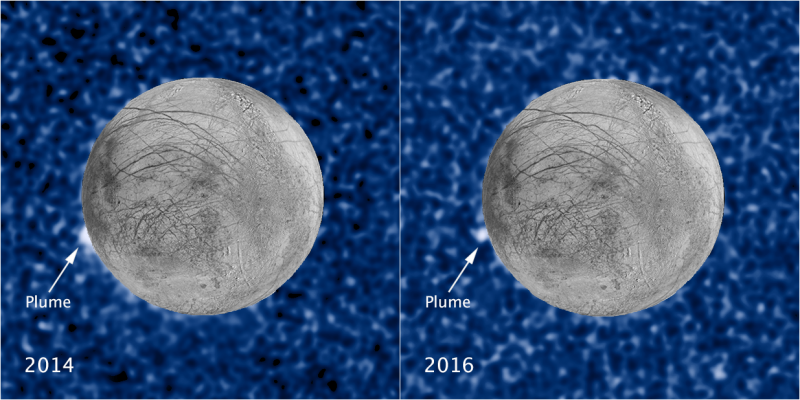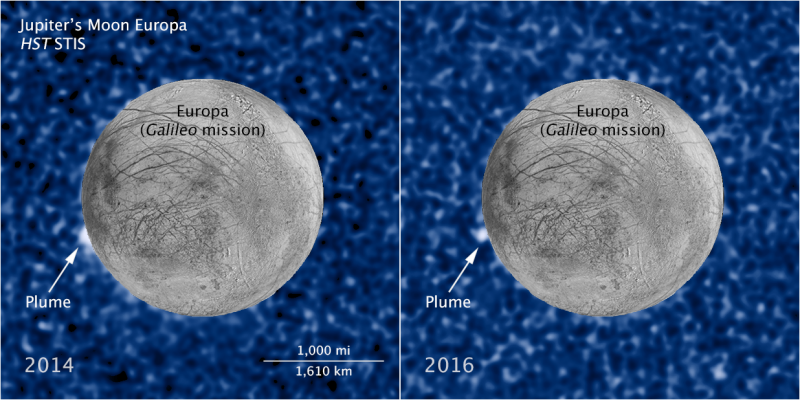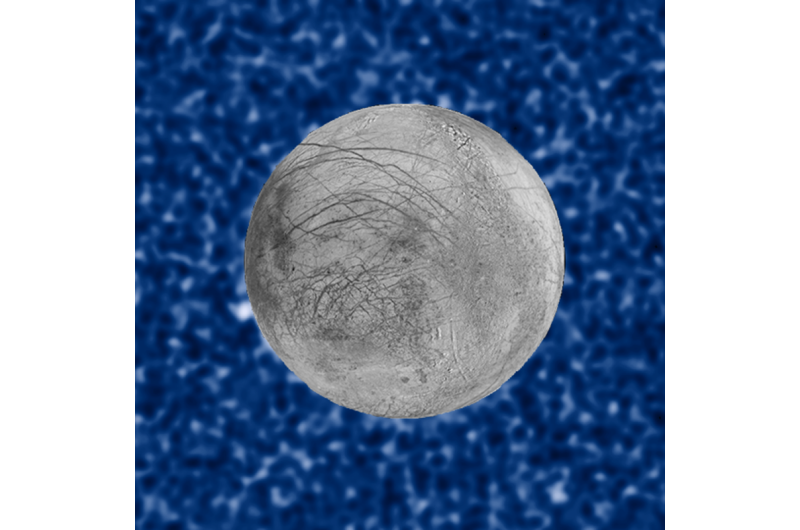Hubble spots possible venting activity on Europa

When Galileo discovered Jupiter's moon Europa in 1610, along with three other satellites whirling around the giant planet, he could have barely imagined it was such a world of wonder.
This revelation didn't happen until 1979, when NASA's Voyager 1 and 2 flew by Jupiter and found evidence that Europa's interior, encapsulated under a crust of ice, has been kept warm over billions of years. The warmer temperature is due to gravitational tidal forces that flex the moon's interior—like squeezing a rubber ball—keeping it warm. At the time, one mission scientist even speculated that the Voyagers might catch a snapshot of geysers on Europa.
Such activity turned out to be so elusive that astronomers had to wait over three decades for the peering eye of Hubble to monitor the moon for signs of venting activity. A newly discovered plume seen towering 62 miles above the surface in 2016 is at precisely the same location as a similar plume seen on the moon two years earlier by Hubble. These observations bolster evidence that the plumes are a real phenomenon, flaring up intermittently in the same region on the satellite.

The location of the plumes corresponds to the position of an unusually warm spot on the moon's icy crust, as measured in the late 1990s by NASA's Galileo spacecraft. Researchers speculate that this might be circumstantial evidence for material venting from the moon's subsurface. The material could be associated with the global ocean that is believed to be present beneath the frozen crust. The plumes offer an opportunity to sample what might be in the ocean, in the search for life on that distant moon.

More information: W. B. Sparks et al. Active Cryovolcanism on Europa?, The Astrophysical Journal (2017). DOI: 10.3847/2041-8213/aa67f8
Journal information: Astrophysical Journal
Provided by ESA/Hubble Information Centre




















